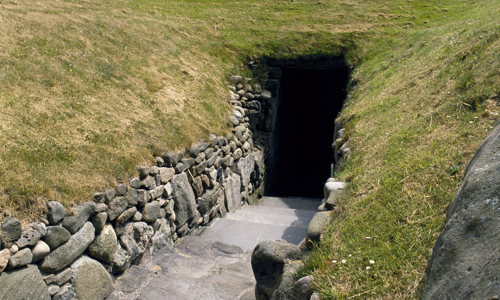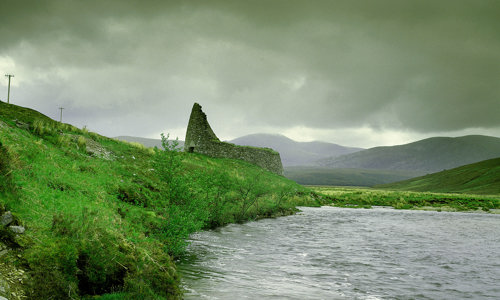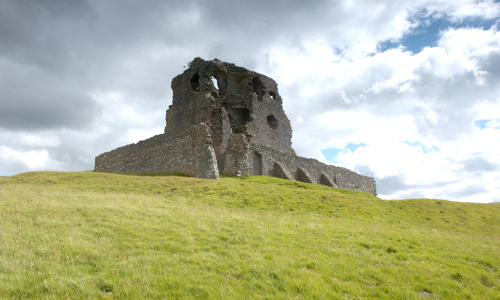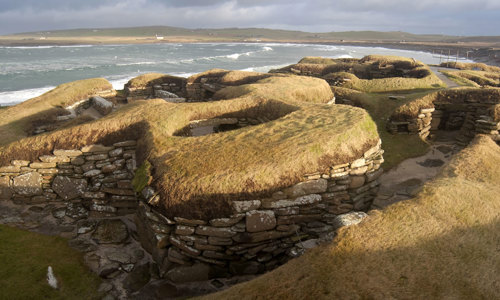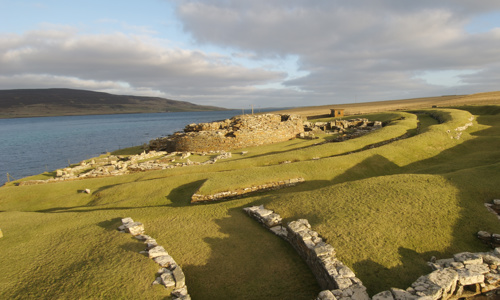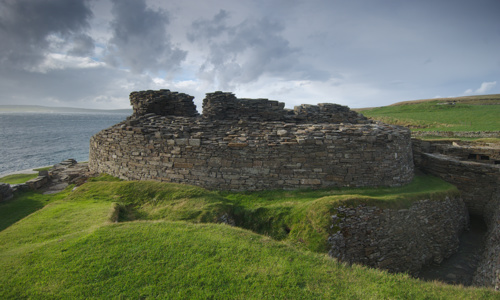History
Uniquely Scottish
Brochs are only found in Scotland, mostly in the north and west. The form of these huge round towers probably developed from earlier roundhouses which became increasingly complex and impressive. Built from drystone, Carn Liath has a narrow entrance passage at ground level, with a guard cell on the north side, and a stairway running up between the two walls, which would have led to upper floors.
Carn Liath is a fine example of a solid-based broch tower. It stands at 3m tall today, but when complete it could have been at least three times that. Carn Liath’s surrounding enclosure also contains the ruins of an associated village - a rare survival of stone houses and outbuildings - the earliest of which would have been contemporary with the broch.
Lines of defence
While broch towers were domestic structures built to impress, they often display defensive qualities too. Carn Liath’s defensive measures include:
- particularly thick walls
- settings for two wooden door-frames – which would have been strengthened by sliding drawbars
- a small chamber that might well have been a guard lodge
The owners of brochs were often wealthy individuals with long-distance contacts. This is illustrated at Carn Liath in the finds of an unusual copper-alloy ingot and a silver brooch, dating to the AD 300s or 400s, derived from Roman types.







